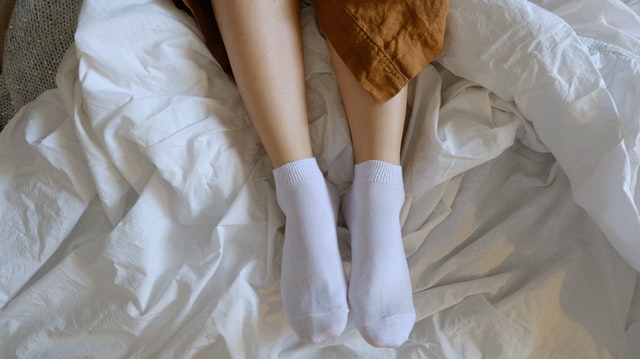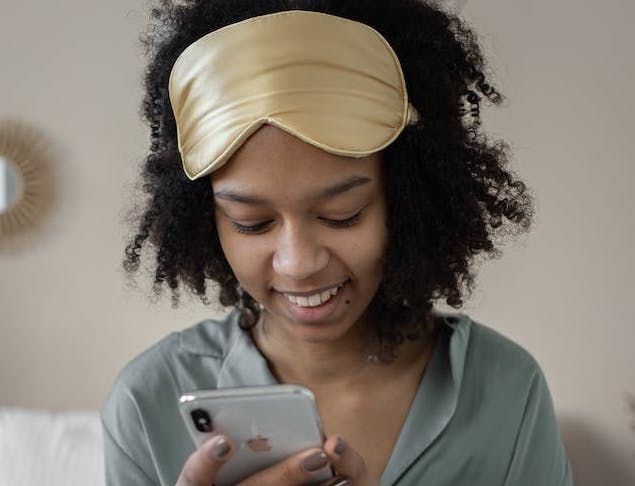Picture this: the feeling of trying to relax or walk after your legs have “fallen asleep,” but the pins and needles, pain, and irritation don’t go away, no matter what you do.
Those with Restless Leg Syndrome (RLS) deal with that very sensation nightly.
RLS sufferers are no stranger to the itching, pulling, aching, throbbing, or creepy-crawly sensations associated with the condition.
If you suffer from RLS, you know just how disruptive it can be. To save your sanity (and sleep quality), it’s important to understand what RLS is, what causes it, and what you can do to treat it.
We’ve rounded up the top three causes of RLS so that you can put a pin in the pins and needles for good.
For starters, let’s break down the details of common symptoms of RLS to better understand this uncomfortable condition.
Common Symptoms of Restless Leg Syndrome
RLS is one of the most common sleep disorders, ailing between 5 and 10 percent of U.S. adults.
Women suffer from RLS more often than men, and your risk of developing the condition rises with age.
Moreover, the disorder seems to be hereditary. Anywhere between 40 to 90 percent of those with RLS report that at least one close relative also suffers from the condition.
If you have RLS, you’re all too familiar with the feeling of creepy-crawly pins and needles that may ache, tingle, or burn.

These sensations may make you want to move around, which can temporarily relieve pesky symptoms.
However, nonstop movement keeps you from relaxing and falling asleep at night. Sleepiness, fatigue, and sleep deprivation may follow.
More severe cases of RLS may make daily activities like driving or sitting through a meeting more difficult and uncomfortable than usual. Even the simplest of activities can become challenging.
Those with mild RLS may find that symptoms come and go. Whether your symptoms are nonstop or only occur once in a while, tossing and turning in bed disrupts both your sleep and your partners’ sleep.

As a result, sleep deprivation, daytime fatigue, and other mental and physical health ailments follow. Preventing and treating RLS is key to keeping your health in check.
Before you can shift your focus toward treating the condition, it’s important to first determine that you actually have RLS and not a more dangerous condition, like poor circulation.
Cause #1: It’s Not Actually RLS
Many people with RLS report that their legs feel “heavy” and are difficult to lift.
While this is possible with RLS, the feeling could be caused by a condition known as heavy leg syndrome.
Heavy leg syndrome is caused by an issue with the veins and circulatory system within the legs. Veins are designed to bring blood back to the heart.
In veins that are less elastic than usual, this flow becomes challenging, causing blood to build up in the legs. This is known as chronic venous insufficiency.

Leg cramps and spasms, dark, hard, and leathery skin, and swelling usually accompany heavy leg syndrome. Furthermore, the development of varicose veins is more likely.
Varicose veins cause the veins to appear closer to the surface of the skin. As valves become weakened due to poor circulation, blood collects in the veins and becomes easily visible.
Venous insufficiency and heavy leg syndrome may cause an increased risk of skin infections, ulcers, or blood clots.
In serious cases, surgery is required to treat the condition. If you suffer from both RLS, symptoms of heavy leg syndrome, or have varicose veins in the legs, consult your doctor about treating poor circulation.
Your RLS may also be caused by a deficiency in a certain mineral, such as iron.
Cause #2: You Have an Iron or Magnesium Deficiency
Your body needs adequate iron to produce hemoglobin, a protein within our red blood cells that transports oxygen from the lungs to the rest of the body.
Iron also helps the body produce myoglobin, a protein that delivers oxygen to muscles. Furthermore, iron is a necessary mineral to make certain hormones and maintain growth and development throughout the body.
Research suggests that there is a strong link between iron deficiency and RLS. Once the iron deficiency is treated, RLS symptoms improve as iron levels rise.
A blood test is necessary to determine iron levels, as taking iron without confirming a deficiency can lead to iron poisoning.

Certain cases of RLS may also be caused by a magnesium deficiency, which may explain why so many people recommend magnesium as a natural treatment for restless leg syndrome.
Scientists believe that magnesium helps prevent RLS because it helps the muscles relax and may block calcium, which helps calm muscles down instead of activating the nerves.
If your magnesium levels are low, calcium isn’t regulated as well, causing overactive muscle contractions that may contribute to the icky feeling of pins and needles in the legs.
Furthermore, magnesium may help you fall and stay asleep, thus improving insomnia caused by restless legs.
Consider taking a magnesium supplement or adding more magnesium-rich foods to your diet to decrease the sensation of restless legs, like:
- Dark leafy greens
- Bananas
- Nuts and seeds
- Fish
- Avocados
If you are pregnant or plan to become pregnant, you should note that pregnancy increases RLS symptoms.
Cause #3: You’re Expecting
While we aren’t completely sure what causes the irritating sensations of RLS in the legs at night, some researchers note that it worsens during pregnancy.
Moreover, some people who have never experienced RLS may find that they develop symptoms while pregnant when they didn’t suffer from the condition before.
RLS in pregnancy may be triggered by the mineral deficiencies we discussed above, like iron. A lack of enough folic acid may also be to blame.

Rising estrogen levels that occur during pregnancy can also contribute to RLS symptoms. Check with your doctor to properly manage iron and folic acid levels throughout each trimester to comfortably manage RLS symptoms.
No matter the cause of your RLS, trying to calm down your symptoms at night leads to irritability and fatigue during the day.
Certain lifestyle changes may help reduce or eliminate RLS symptoms altogether.
Try These Lifestyle Changes to Beat RLS For Good
If your RLS is mild, an over-the-counter pain reliever may help to reduce any pins and needles, twitching, or restlessness in the legs.
Be sure to cut back on alcohol, caffeine, and tobacco, as these can worsen irritating symptoms.
Relaxation techniques such as a hot bath, a nightly leg massage, meditation, or yoga may help to relax the body and mind.

Keep a warm or cold compress on hand to relieve sensations in the legs. Avoid moderate exercise late in the day, as it can worsen your symptoms.
Sleep deprivation and other sleep conditions such as sleep apnea worsen RLS. In turn, RLS makes it harder to sleep. It’s a tricky cycle to break.
Develop a nightly routine and try to fall asleep at the same time each night to keep your circadian rhythm in check.
You can also try taping your mouth at night to improve sleep quality, cut back on snoring, and put an end to unhealthy mouth breathing that fragments your sleep.
Before you ask, no, we aren’t kidding! You read that right: taping your mouth at night is the perfect hack for achieving better sleep.
Tape Your Way to RLS Relief
Believe it or not, proper airway health during sleep can improve your sleep patterns and potentially help you drift off at night instead of lying awake, focusing on your restless legs.
Open mouth breathing at night leads to numerous health risks, such as increased cortisol levels and snoring.
Nasal breathing, however, takes the body out of overdrive and allows for a more controlled rate of oxygen delivery throughout the body.
That means you’ll relax quicker, fall asleep faster, and stay asleep longer by taping your mouth shut before bed.
@somnifix Ready to freak out your partner before bed? 🛏👄 #mouthtaping #insomnia #sleepapnea #snoring #learnontiktok #didyouknow 🎥: @Whole Body Healing with Jen ♬ Zou Bisou Bisou - Gillian Hills
SomniFix Mouth Strips were created with every skin type in mind: they’re hypoallergenic, latex-free, gluten-free, and offer comfortable, gel-like adhesion that you just won’t find with any other type of tape!
Finding the right solutions to manage your RLS may prove difficult, but you can’t deny the benefits of mouth taping during sleep.
Try adding SomniFix to your nightly routine for improved relaxation, uninterrupted sleep, and better health tonight.



